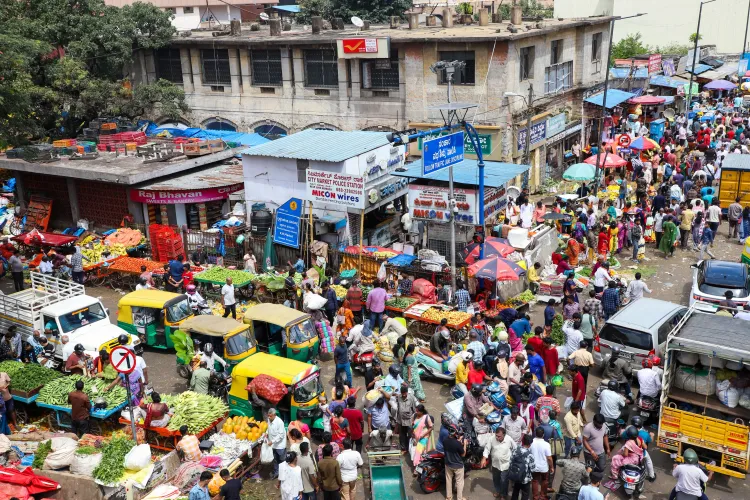Did FM Sitharaman Announce Record Diwali Sales of Rs 6.05 Lakh Crore?

Synopsis
Key Takeaways
- Record Diwali sales reached Rs 6.05 lakh crore.
- GST rate cuts significantly boosted consumer spending.
- Mainline retail made up 85% of total sales.
- Temporary jobs for 50 lakh people created.
- Rural areas contributed 28% to overall sales.
New Delhi, Oct 22 (NationPress) Finance Minister Nirmala Sitharaman on Wednesday pointed out a remarkable increase in Diwali sales this year, reaching an unprecedented Rs 6.05 lakh crore. This surge was fueled by GST rate reductions and robust demand for ‘swadeshi’ products.
The Finance Minister referenced the Confederation of All India Traders (CAIT), which estimated that this year’s Diwali sales included Rs 5.4 lakh crore in goods and Rs 65,000 crore in services.
This represents a 25 percent increase compared to the 2024 festive sales of Rs 4.25 lakh crore during the Navratri to Diwali period, marking the highest sales ever recorded in India's trading history, as reported by the Research and Trade Development Society, CAIT's research arm.
Mainline retail constituted almost 85 percent of the total sales, indicating a strong comeback of the physical retail market, as revealed by the survey.
The decrease in GST rates for essential consumer and retail categories, including confectionery, home decor, footwear, ready-made garments, consumer durables, and everyday items, significantly enhanced price competitiveness and boosted purchasing activity.
Approximately 72 percent of surveyed traders noted increased sales volumes directly linked to the reduced GST, according to the findings.
Consumers reported higher satisfaction with stable prices during the festive season, supporting ongoing consumption even after Diwali.
The non-corporate and non-agricultural sectors have emerged as key drivers of India's growth, supported by 9 crore small businesses, countless small manufacturing units, and the largest consumer base.
The data indicated that the Diwali trade surge has likely created temporary employment for around 50 lakh people in logistics, transportation, retail support, packaging, and delivery.
Improved purchasing power in rural and semi-urban areas contributed nearly 28 percent to total sales, showcasing significant economic reach beyond metropolitan areas.
According to CAIT, Diwali 2025 has established a new standard in India’s retail and trading landscape, representing the blend of tradition, technology, and trust in Indian entrepreneurship. They noted that this year’s Diwali is a pivotal achievement in fostering an 'Aatmanirbhar Bharat' under the visionary leadership of Prime Minister Narendra Modi.









